Flying Missions in a remote desert: In search of our ancestral trails I
Scientists are tough. For years, they have faced many challenges in pursuing their ultimate goals and for many times they blew our minds with fascinating stories describing the beauty of our world. Among the most intriguing of all are the stories of us, human beings, the most intelligent kind that we ever know. And scientists never lose their passion in revealing the evidence that sheds light on why humans end up humans.
However, stories of the past are usually not very well told and many more have never been told at all. They are long lost, buried underground for thousands or even millions of years. Lake Turkana of Kenya is just one of the places with stories waited to be uncovered.


And archaeologists are always ready to go. Since the first discovery of hominid fossils in Lake Turkana region, 1960s, it has been a hot spot for many archaeologists and anthropologists, and indeed it is very HOT there! With day temperature hitting 40 degrees centigrade, the Lake Turkana Basin is situated right in the middle of a desert, where we made our quests in search of our ancestral trails.
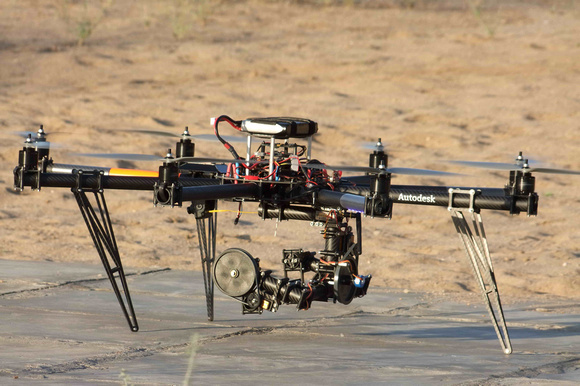

With perils ahead, we still had to carry out our flying missions. We had an intelligent air unit: a state-of-the-art remote controlled eight-propeller Octo-Copter that can hover in the air like a humming bird, cruise in the sky like a hawk, and carry a camera that takes photos and videos. Our goal is to push the limits of new technology, to see how this robotic agent would help us to spot out traces of ancient remains from high up. Our captain, Gonzalo Martinez from Autodesk, is the pilot and mechanic of this ultimate toy. Ground support is from Shaan Hurley, Louise Leakey and myself.
It is always wise to prepare well and to plan ahead for any field trip, since field conditions are highly unpredictable. Our team did very well in that and even brought a spare copter with us! Yet, problems began even before our arrival at Lake Turkana. After the lost and found of a passport, a delayed check-in of a passenger and a series of security checks on our luggage, we finally got on the plane to Lodwar, the largest town to the west of Lake Turkana. It was really hard to convince others that what we were carrying was not a UFO…
As soon as we stepped on the ground of Lodwar, we started to feel the power of the desert: waves of relentless heat stroke us hard, with the dazzling white sun burning our skin. That was what we had to deal with in the following 10 days! It was hard to imagine if any people could ever live there without the life-giving Turkwel River.




Yet, on the way to the camp of Turkana Basin Institute in Turkwel, we were totally shocked by the vibrant landscapes: vast areas of green grass and shrubs scattered with goats and camels, water holes in various sizes, wild melon vines bearing juicy fruits. Not a desert at all! However, this scene would only be seen at the end of the rainy seasons and certainly for most time of the year, the land is almost barren.
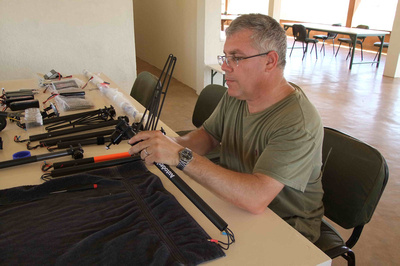



After a couple of hours’ roller-coasting on a Toyota Land Cruiser, we arrived at TBI Turkwel at noon time. Although exhausted by all the traveling and high temperature, our captain Gonzalo started to assemble the copter right after lunch. Still not used to the baking environment even under the roofs, he really struggled to connect all the parts, cables and screws with sweat all over. I greatly admire the meticulous caution our captain took in the two-hour process, as if he was taking care of his own baby.
And the best thing to do in the middle of the day is…


To take a nap… :)
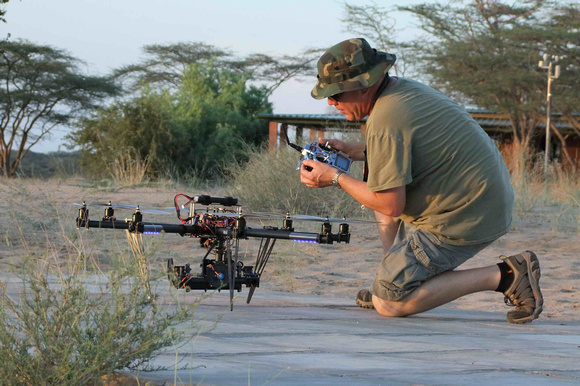

Having overcome weariness, dehydration and overheating of both gears and our brains, we were ready for a test fly! Following the steps of our captain, all ground units were deployed and settled.
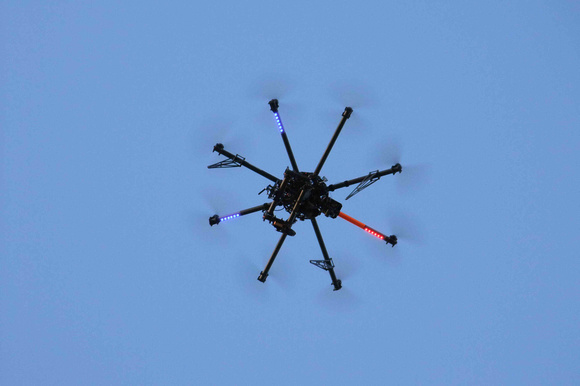
 After careful calibrations of all electronic devices and a quick pre-fly check… Up it went! This “flying spider” hovered very well in the air and surprisingly, it could do quick turns, fast climbing and descending! Even ravens were attracted to see its agile performance! Fascinating!
After careful calibrations of all electronic devices and a quick pre-fly check… Up it went! This “flying spider” hovered very well in the air and surprisingly, it could do quick turns, fast climbing and descending! Even ravens were attracted to see its agile performance! Fascinating!
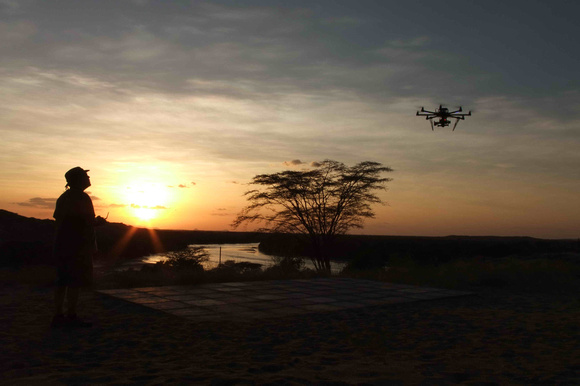
 As the sun went down, it was close to the end of our fist flight. Bathing in the soft afternoon sunlight, looking at the splendid sunset with an equally splendid invention in the air, we all came to the same conclusion: what a wonderful flight! (To be continued)
As the sun went down, it was close to the end of our fist flight. Bathing in the soft afternoon sunlight, looking at the splendid sunset with an equally splendid invention in the air, we all came to the same conclusion: what a wonderful flight! (To be continued)
For more information: Blog post by Shaan Hurley, View and download photos of this post
Comments
I deeply appreciate your passion for science, science writing and photography, the illustrating photos are perfectly in line with the text!
I am very curious about the censors carried on the smart gear. I have learnt that micro-wave remote sensing tools are widely used in revealing mysteries in archaeology and paleontology, since the the special electromagnetic wave is able to penetrate deeply into underground and extract valuable hidden information sources.
Greetings from Tibet, Da
Gonzalo from London
I'm so pleased that you wisely extended your stay in East Africa. The hands-on, state-of-the-art experience you're getting is PRICELESS!
Thank you so much for sharing this information with us, which should be of special interest to Peking University undergraduates MU Tong, LIU Xingchen and ZHAO Zhilei.
I'll also bring this post to the attention of professors who may be interested in it. This clearly demonstrates what a Peking Life Sciences graduate is capable of undertaking.
EXCITING RESEARCH, Deming!